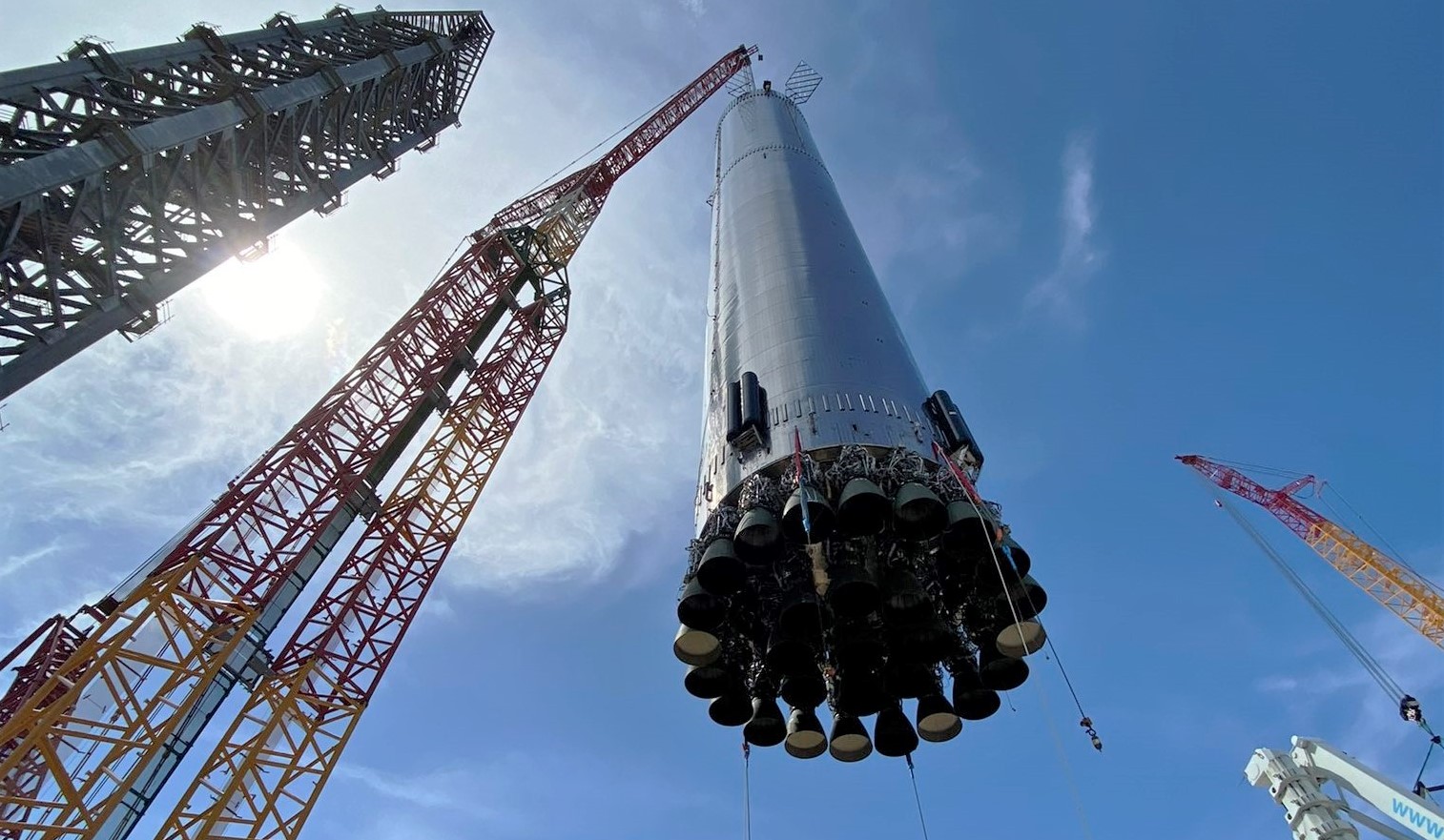A fresh set of photos released by SpaceX reveals that the corporation is almost finished installing 39 improved Raptor engines on a new Starship and its Super Heavy rocket. If both of the planned test campaigns for Ship 24 and Booster 7 go off without a hitch, they may be assigned the responsibility of assisting the Starship’s maiden orbital launch attempt later this year.
The likelihood of this happening is still unknown, but recent development indicates that it won’t be long before the possibilities for both models come into a sharper view. The Super Heavy Booster 7 (B7) has completed its task after multiple iterations of proving testing and two flights to and from SpaceX’s Starbase, Texas (OLS) orbital launch site in March, April, and May. Three visits to the pillow 23rd of June.
It was already a remarkable achievement to construct, certify, ship, and install 33 new Raptor 2 engines on the Super Heavy B7, which resulted in the most powerful (theoretical) rocket booster ever put together. On July 2, SpaceX posted two images showcasing the almost finished Booster 7 engine section as well as the completion of the installation of all six Raptor engines and even a portion of the Starship S24’s thermal shielding.
In comparison to Ship 20, the sole Starship prototype with six Raptors mounted, there are already noticeable changes between Ship 24 and Ship 20. The most noticeable alteration is the inclusion of a metal structure that spans the whole width of the stern, most likely to hold the flat pieces of insulation and thermal protection that would partly encase the Starship’s delicate engine, plumbing, and pressure vessels, and avionics components situated in the rear.
The hostile environments to which the gadgets will be subjected during ground testing and maybe in flight should be reduced thanks to the added protection.
Four cryoproofs and a Raptor thruster simulation test were among the several tests that Super Heavy Booster 7 has already successfully completed. Since its third return to the pillow, SpaceX has performed a number of mysterious experiments, but none of them seem to have included fuel loading that is chilled.
The Booster 7’s pressure system will likely be the main focus of those tests, which may include filling its tanks with heated oxygen and methane gases that they will ultimately utilize to pressurize. Before trying to launch any of the 33 Raptor raptors, SpaceX presumably wants to run the Booster 7 through at least one successful test using actual liquid methane and oxygen fuel.
Before conducting any static fire tests, technicians must finish fitting a few more panels in the booster 7 rear thermal protection system. Cryoproof and Raptor propulsion simulation tests on Starship S24 have been successful, with no major issues.
On June 9, the ship was brought back to the assembly bay, where workers were finishing up the ship’s engine section, adding heat shield tiles, and doing hundreds of other less noticeable shutdown duties.
The spacecraft’s testing on one of SpaceX’s two suborbital test and launch mounts was just completed, while semi-permanent modifications were made to the second mount to test simulated cold and thrust for upcoming prototypes. On July 5, 6, 7, 11, and 12, SpaceX asked for authorization to close roads for each possible 12-hour test window.
Source: Wortley Today

